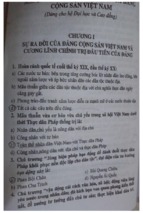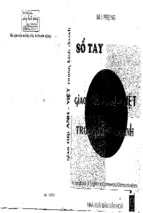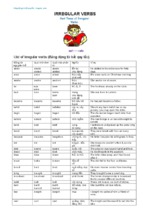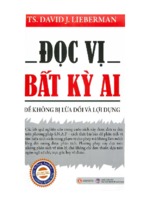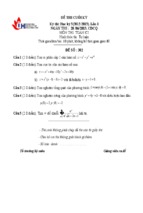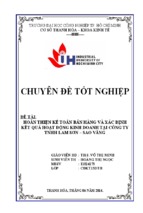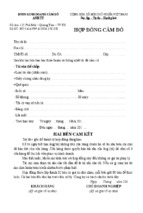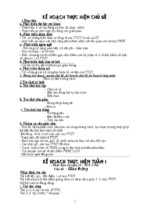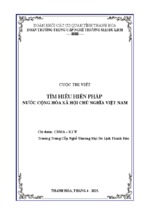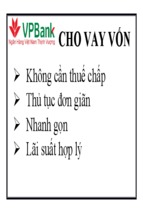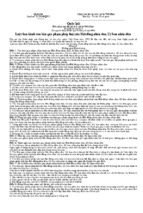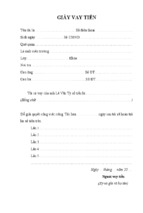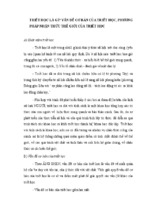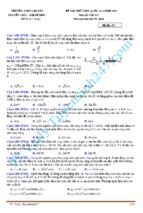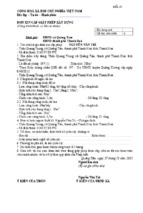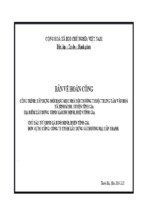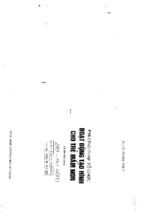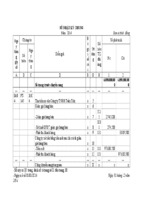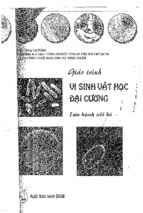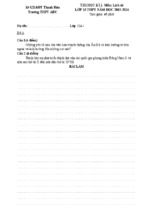MINISTRY OF EDUCATION AND TRAINING
HANOI OPEN UNIVERSITY
…………o0o…………
M.A.THESIS
IDIOMS, PROVERBS RELATING TO BIRDS IN
ENGLISH AND VIETNAMESE
(Các thành ngữ, tục ngữ liên quan tới loài chim
trong tiếng Anh và tiếng Việt)
Field: English
Language Code:
8220201
Hanoi, 25/08/2021
MINISTRY OF EDUCATION AND TRAINING
HANOI OPEN UNIVERSITY
…………o0o…………
M.A.THESIS
IDIOMS, PROVERBS RELATING TO BIRDS IN
ENGLISH AND VIETNAMESE
(Các thành ngữ, tục ngữ liên quan tới loài chim
trong tiếng Anh và tiếng Việt)
PHẠM THỊ HỒNG HÀ
Field: English
Language Code:
8220201
Supervisor: Dr. Lê Phương Thảo
Hanoi, 25/08/2021
CERTIFICATE OF ORIGINALITY
I, the undersigned, hereby certify my authority of the study project report entitled
“IDIOMS AND PROVERBS RELATING TO BIRDS IN ENGLISH AND
VIETNAMESE” submitted in partial fulfillment of the requirements for the degree of
Master in English Language. Except where the reference is indicated, no other person’s
work has been used without due acknowledgement in the text of the thesis.
Hanoi, 2021
Pham Thi Hong Ha
Approved by
SUPERVISOR
DR. LÊ PHƯƠNG THẢO
DATE:………………………
i
ACKNOWLEDGEMENTS
This thesis could not have been completed without the help and support from many
people. I would like to take this opportunity to thank them all most sincerely, knowing
that my thanks are never adequate.
First and foremost, I would like to express my sincere gratitude to Dr.Lê Phương Thảo,
my supervisor, who has patiently and constantly supported me through the stages of the
study, and whose stimulating ideas, expertise, and suggestions have inspired me greatly
through my growth as an academic researcher. I would like to thank
Assoc.Prof.Dr.Hoàng Tuyết Minh, Assoc.Prof.Dr. Hồ Ngọc Trung, Dr.Trần Lê Dung
for their invaluable suggestions, highly constructive comments on several issues related
to the dissertation. Many thanks go to my friends and many others whose support and
encouragement help me to have this thesis accomplished. My sincere thanks also extend
to all experts of the English Department for their assistance that has made them for their
assistance and that has made the finalization of the dissertation possible in a very short
time.
Last but not least, I am greatly indebted to my family for their patience, endless love,
and devotion. Whatever choices I have made, they have always stood by me and
believed in me. I am immensely thankful for all the assistance they have given me.
ii
ABSTRACT
Language and culture are intimately connected. Language generally reflects the culture
and vice versa, culture has a strong influence on the language. Two countries with
different cultures will surely have many dissimilarities in language and that does not
except idioms and proverbs, which play a crucial part in language. The study is carried
out with the aims to investigate the semantic and cultural features relating to birds in
English and Vietnamese such as to discover cultural values through proverbs and
idioms, to investigate the similarities and differences between English and Vietnamese
idioms and proverbs relating human characteristics through images birds, to help the
Vietnamese learners of English be more aware of English and Vietnamese proverbs and
idioms and how to use them appropriately and interestingly, to provide some suggestions
for the teaching/learning and translation of the proverbs and idioms relating to birds, to
understand the semantics and cultural features, to identify the similarities and
differences using the idioms and proverbs relating to birds in daily communication in
English and Vietnamese languages and to suggest some implications for learners and
teachers to gain a better insight into various aspects about idioms and proverbs.
Investigating and explaining some similarities and differences between idioms and
proverbs relating to birds in English and chim in Vietnamese help to strongly
corroborate the inextricable and dialectical relationship between culture and language,
ameliorate knowledge of idioms and enhance cultural understanding of Vietnamese and
English people to a great extent. Making comparisons will also better translation ability
in some ways. Moreover, through the scrutiny and analysis, there emerges a golden
opportunity to review some general and essential knowledge of language, culture,
similes, and idioms.
iii
TABLE OF CONTENTS
CERTIFICATE OF ORIGINALITY............................................................................. i
ACKNOWLEDGEMENTS ......................................................................................... ii
ABSTRACT ............................................................................................................... iii
TABLE OF CONTENTS ............................................................................................ iv
Chapter 1: INTRODUCTION .................................................................................. 1
1. RATIONALE .......................................................................................................... 1
2. AIMS AND OBJECTIVES OF THE STUDY ......................................................... 2
3. RESEARCH QUESTIONS ...................................................................................... 2
4. RESEARCH METHODS......................................................................................... 3
5. SCOPE OF THE STUDY ........................................................................................ 3
6. SIGNIFICANCE OF THE STUDY ......................................................................... 3
7. STRUCTURE OF THE STUDY.............................................................................. 4
Chapter 2: LITERATURE REVIEW AND THEORETICAL BACKGROUND . 5
2.1. REVIEW OF PREVIOUS STUDIES .................................................................... 5
2.1.1. Previous Research Works on Idioms in English ....................................... 5
2.1.2. Previous Research Works on Idioms in Vietnamese ................................ 7
2.2. AN OVERVIEW OF SEMANTICS ..................................................................... 9
2.2.1. Definition ................................................................................................ 9
2.2.2. Semantic features .................................................................................. 10
2.3. AN OVERVIEW OF CULTURE........................................................................ 13
2.3.1. Definitions ............................................................................................ 13
2.3.2. The relationship between language and culture ...................................... 13
2.3.3. Characteristics features of Vietnamese and English cultures .................. 15
2.3.3.1. Features of English cultures ..................................................... 15
2.3.3.2. Features of Vietnamese cultures............................................... 16
2.4. AN OVERVIEW OF IDIOMS ............................................................................ 17
2.4.1. Definitions of idioms ............................................................................. 17
2.4.2. Some common features of idiom ........................................................... 19
2.5. AN OVERVIEW OF PROVERBS ..................................................................... 21
2.5.1. Definition of proverb ............................................................................. 21
2.5.2. Some common features of Proverb. ....................................................... 22
2.6. THEORETICAL BACKGROUND OF THE STUDY ........................................ 23
2.6.1. Semantic features of Idioms and Proverbs relating to “birds” in English
and “chim” in Vietnamese............................................................................... 23
iv
2.6.2. Cultural features of Idioms and Proverbs in English and Vietnamese .... 24
2.6.2.1. Based on principles of cultural types ........................................ 24
2.6.2.2. Based on cognitive cultural ...................................................... 25
2.7. SUMMARY ....................................................................................................... 25
Chapter 3: A COMPARISON OF SEMANTIC AND CULTURAL FEATURES
OF IDIOMS AND PROVERBS RELATING TO BIRDS IN ENGLISH AND
CHIM IN VIETNAMESE ....................................................................................... 27
3.1. THE SEMANTIC AND CULTURAL FEATURES OF IDIOMS AND PROVERBS
RELATING TO BIRDS IN ENGLISH AND CHIM IN VIETNAMESE .................... 27
3.1.1. Semantic features of Idioms and Proverbs relating to birds in English
(IPRBs) .......................................................................................................... 27
3.1.1.1. Physical characteristic (incl. Appearance, Movement, Color): . 27
3.1.1.2. Intellectual characteristics (including Intelligence, Stupidity,
Cowardice): .......................................................................................... 29
3.1.1.3. Physiological characteristics (Tiredness, Fret, Fear): ............... 30
3.1.1.4. Behaviors and attitudes (Dishonesty, Diligence, Laziness, Care) 30
3.1.1.5.
Evaluative
characteristics
(Carelessness,
Talkativeness,
Uncontrollableness, Uselessness) ......................................................... 30
3.1.1.6.
Disease,
parent
relationship,
transmitting
of
species
characteristics from parents to their offspring ....................................... 31
3.1.1.7. Emotional characteristics (Embrrassment, Unstableness, Joy,
Envy, Greed, etc.)................................................................................. 32
3.1.1.8. Time measurement and bird’s characteristic way of making
sounds .................................................................................................. 33
3.1.2. Cultural features of Idiom and Proverb relating to “Birds” in English ... 33
3.1.2.1. Denoting Geography Environment and History ....................... 33
3.1.2.2. Denoting Religion Belief ......................................................... 36
3.1.2.3. Denoting Custom Belief .......................................................... 37
3.2. THE SEMANTIC AND CULTURAL FEATURES OF IDIOMS AND
PROVERBS RELATING TO “CHIM” IN VIETNAMESE ....................................... 38
3.2.1. Semantic features of Idiom and Proverb relating to “Chim” in Vietnamese 38
3.2.1.1. Physical characteristics (Appearance, Movement, Color) ......... 38
3.2.1.2. Physiological characteristics (Fret, Fear, Sad) .......................... 40
3.2.1.3. Emotional characteristics (Embarrassment, Unstableness or Joy) 40
3.2.1.4. Behaviors and attitudes (Dishonesty, Diligence, Laziness, Care) 41
3.2.1.5. Intellectual characteristics (Intelligence, Stupidity, Cowandice) . 42
v
3.2.1.6.
Evaluative
characteristics
(Carelessness,
Talkativeness,
Uncontrollableness, Unsafeness) .......................................................... 42
3.2.1.7. Diseases ................................................................................... 43
3.2.1.8. Time measuremen.................................................................... 43
3.2.2. Cultural features of Idioms and Proverbs relating to “Chim” in Vietnamese . 44
3.2.2.1. Denoting Geography, Environment and History ...................... 44
3.2.2.2. Denoting Religious Belief ........................................................ 45
3.2.2.3. Denoting Customs Belief ......................................................... 46
3.3. A COMPARISON BETWEEN IDIOMS AND PROVERBS RELATING TO
“BIRDS” IN ENGLISH AND “CHIM” IN VIETNAMESE ...................................... 47
3.3.1. In terms of semantic features ................................................................. 47
3.3.2. In terms of cultural features ................................................................... 48
3.4. SUMMARY ....................................................................................................... 49
Chapter 4: CONCLUSION ..................................................................................... 51
4.1. RECAPITULATION .......................................................................................... 51
4.2. CONCLUDING REMARKS .............................................................................. 51
4.3. LIMITATIONS OF THE STUDY ...................................................................... 52
4.4. RECOMMENDATIONS AND SUGGESTIONS FOR FURTHER RESEARCH 53
REFERENCES .......................................................................................................... 54
English Authors .............................................................................................. 54
Vietnamese Authors ........................................................................................ 57
APPENDIX: IDIOMS AND PROVERBS RELATING TO BIRDS IN ENGLISH AND
CHIM IN VIETNAMESE ......................................................................................... 59
VIETNAMESE IDIOMS: Names of birds ................................................................. 66
vi
Chapter 1: INTRODUCTION
1. RATIONALE
Theoretically, there have been quite a lot of studies and investigations into idioms
and proverbs concerning animals, plants, colors, causes, and results, etc. Nevertheless,
due to a certain gap in cultures and semantic perspectives, the idiom and proverbs
relating to the word bird have not received enough attention from linguists in both
English and Vietnamese, especially in terms of cultures and semantic features. The
diversity of semantics of the idioms and proverbs relating to birds denoting social
relationships encourages me to do this research.
Practically, when using idioms and proverbs related to birds, many Vietnamese
learners do not know the real meaning of the idioms and proverbs, especially because
of the differences in cultures. So this study is conducted in the hope of help Vietnamese
learners of English improve their understanding of idioms and apply idioms in
communication so that their speech is more adequate, natural, interesting, and
imaginative.
Idioms and proverbs reflect certain cultural traditions and add color to the
language and make communication more lively and interesting. That is the reason why
idioms and proverbs are so popular.
Birds are considered significant animals that nature has provided to feed both our
body and spirit. As well, birds nourish our whole living style, supplying a source of
energy that is an essential and wonderful part of life. In fact, the idioms and proverbs
relating to birds (IPRBs) in English and chim (IPRC) in Vietnamese occupy a
considerable amount of our speech and are considered an interesting phenomenon in
language. In daily communication, people often borrow the (IPRBs) for not only
conveying the denotative meaning but also communicating and expressing speakers’
and listeners’ attitudes, feelings, behavior, related inspiration, or the world outlook.
The IPRBs have a variety of meanings that make people learning foreign
languages confused using the IPRBs in both English and Vietnamese. Clarifying the
semantic features will help learners of English and Vietnamese to understand and use
them effectively to achieve their communication goals. As a result, the topic “Features
1
of idioms and proverbs relating to the birds in English and chim Vietnamese” has
been carried out according to the reasons cited.
Therefore, it is necessary to research this matter to enrich characteristics of the
IPRBs and IPRC, “Idioms and Proverbs relating to Birds in English and
Vietnamese” has been carried out according to the reasons cited. To present an overview
of proverbs and idioms in general and a contrastive analysis of proverbs and idioms
relating to birds in English and Vietnamese in particular. I hope it will partly help
learners and translators avoid difficulties in realizing and translating English proverbs
and idioms into Vietnamese and vice versa.
2. AIMS AND OBJECTIVES OF THE STUDY
The study aims to help Vietnamese learners master idioms and proverbs relating
to “birds” in English and “chim” in Vietnamese in terms of semantic and cultural
features.
• OBJECTIVES
To gain the aims, the following three main objectives are put forward:
✓ To identify, describe and analyze the semantic and cultural features of idioms and
proverbs relating to “birds” in English and “chim” Vietnamese.
✓ To explore and explain the similarities and differences of semantic and cultural
features of idioms and proverbs relating to “birds” in English and “chim” in
Vietnamese.
✓ To give some suggested implications for teaching and learning idioms and
proverbs relating to “birds” in English and “chim” in Vietnamese effectively.
3. RESEARCH QUESTIONS
The objectives of the study can be elaborated into the research questions as follow:
-
What are the semantic and cultural features of idioms and proverbs relating to the
word “birds” in English and “chim” in Vietnamese?
-
What are the similarities and differences between English and Vietnamese idioms
relating to “birds” in English and “chim” in Vietnamese, in terms of semantic and
cultural features?
-
What are the implications of the study to help Vietnamese learners to master to
idiom and proverb teaching and learning?
2
4. RESEARCH METHODS
- Descriptive methods are used to describe the semantics and cultural features idioms
and proverbs relating to the word “birds” in English and “chim” in Vietnamese.
- Comparative methods are used to make a comparison to find out the similarities and
differents between idioms and proverbs relating to “birds” in English and “chim” in
Vietnamese in terms of semantic and cultural features.
- Within this thesis I only mention in the research object and scope of the thesis to
idioms and proverbs relating to birds in English and chim in Vietnamese. The most
important thing in data collection is to collect materials related to the study. I tried to
choose the most appropriate ones. Data is described, classified and analyzed
systematically for the comparative analysis.
- The findings of semantic and cultural features as well as analysis of these kinds of
IPRBs and IPRC will provide great benefits for Vietnamese learners of English and
English learners of Vietnamese.
5. SCOPE OF THE STUDY
In the theoretical background of the study, the thesis only focuses on idioms and
proverbs relating to birds in English (IPRBs) and chim in Vietnamese (IPRC), namely,
linguistic features of idioms and proverbs relating to birds in English and chim in
Vietnamese are semantic and cultural features. 222 idioms and proverbs relating to
birds in English and 193 idioms and proverbs relating to chim in Vietnamese are
collected from reference books, dictionaries and Internet websites. This research is
restricted to English and Vietnamese idioms and proverbs on “birds” in comparative
structures.
6. SIGNIFICANCE OF THE STUDY
Theoretically, a common theory on idioms is applied to both English and
Vietnamese. This approach helps to find out the similarities and differences between
English and Vietnamese idioms relating to birds in English and chim in Vietnamese in
terms of semantic and cultural features. This is a major contribution to the knowledge
of linguistics in general and that of idioms and proverbs relating to birds in particular.
Since language and culture are closely intertwined, the findings will help improve the
knowledge of the two underlying cultures, which are expressed through those idioms.
Practically, the work will provide assistance to English-speaking learners of
3
Vietnamese and Vietnamese learners of English in general and learners of English at
High School to distinguish one kind of idioms from others in each language. The work
will also enable learners to tell when idioms by birds in English and Vietnamese are
similar and different, which is likely to be useful for their study. Language teachers will
be aided to help their learners to reach this communicative goal. For translation,
knowledge of idioms and proverbs from this work will help translators find closest
equivalents to the expressions in the source language. Idioms and idiomatic expressions
are the most culture-bound part of any language, so their transfer is one of the most
problematic issues in translation. It is because transfer of language also involves that of
culture, which is not always transferable. In this way, knowledge from this sort of work
will be of great benefit to translators, who should be able to find the possible equivalents
in the target language.
7. STRUCTURE OF THE STUDY
The study consists of four chapters.
Chapter 1, “Introduction” outlines the background of the study. In this part, a
brief account of relevant information is provided such as rationale, aims, and objectives,
research questions, scope, methods, significance, and structure of the study.
Chapter two, as implied by the title “theoretical background and literature
review” for the study. It consists of a review of previous studies, an overview of
semantics, an overview of culture, an overview of idioms, an overview of proverbs, a
theoretical background of the study, and a summary.
Chapter three is concerned with the semantic and cultural features of idioms
and proverbs relating to “birds” in English and “chim” in Vietnamese; a comparison
between idioms and proverbs relating to “birds” in English and “chim” in Vietnamese
and summary.
Chapter four is “Conclusion”, which provides the recapitulation, implications
for the EFL teaching, learning and the translation and suggestions for further studies.
The study ends with the “References”.
4
Chapter 2: LITERATURE REVIEW AND THEORETICAL
BACKGROUND
2.1. REVIEW OF PREVIOUS STUDIES
2.1.1. Previous Research Works on Idioms in English
Delahunty, G.P (2010) stated his linguistic view of meaning in his study
“Semantics involves the literal meaning of words and the literal meaning of sentences
considered outside their contexts”.
Makkai (1972) divides idioms into two main kinds: encoding and decoding.
Then, decoding idioms are subdivided into lexemic and semantic. Semantic idioms
consist of six categories: phrasal verbs, tortures, irreversible binomials, phrasal
compounds, incorporating verbs, and pseudo idioms. Seidl and McMordie (1988),
Cowie, Mackin & McCaig (1993) mention the categories of idioms based on their topics
and grammatical patterns. From transformational grammar, Fraser (1970) regards an
idiom as a constituent or a series of constituents whose meaning does not come from the
meanings of individual parts. He also mentions six-level scales of idioms: unrestricted,
reconstitution, extraction, permutation, insertion, adjunction, and completely frozen.
Semantically, Dr. Phan Van Que (1996) investigates idioms and proverbs having
constituents of animals in English. In this study, typical cultural properties conveyed by
this type of idioms and proverbs are established. This is regarded as initial research
investigating English idioms and proverbs in terms of their semantic properties from a
component perspective.
Fernando & Flavell (1981) are the linguists who realize the limitations of the
previous scholars. They suppose that idiom and idiomaticity are not the same. They
focus on the nature of idioms such as morpho-syntactic composition, semantic
properties, homonymy, syntactic properties, etc.
They also examine several issues which focus attention on the idiom as a single
lexeme that is non-correlative in its syntax and therefore non-literal in terms of its
constituents. The most satisfying and sensitive criterion to establish idiomaticity is
undoubtedly the semantic one. Semantically,
5
Fernando & Flavell (1981) establish the transparent-opaque axis for analyzing
idioms. In defining idiom, they stress three features in particular: a non-correlative
syntax resulting in non-literalness, homonymy, and institutionalization.
From a cognitive view, Nunberg et al. (1994) divide idioms into two categories
(i) Idiomatically combining expressions whose constituent parts carry
identifiable parts of their idiomatic meanings, and (ii) idiomatic phrases whose
idiomatic meanings cannot be derived from their parts (see Section 1.1.3). Fernando
(1996) also divides English idioms into three categories: pure idioms, semi-idioms, and
literal idioms.
Grammatically, Taylor (2002) mentions the interrelated topics of idioms and
constructions. The topics are interrelated in that both idioms and constructions are
possibly considered as symbolic units, which associate a phonological (or ‘formal’)
representation with a semantic reading.
According to his points of view, constructions are usually specified at a high
level of schematics and likely to sanction an open set of expressions. Nevertheless, a
construction’s usage range may not be fully predictable: constructions, in other words,
display varying degrees of idiomaticity. Idioms generally need to be specified at a
lower level of schematics. Taylor (2002) also points out that the difference between
idioms and constructions turns out to be a gradient distinction, having to do, essentially,
with the schematics at which a unit is specified. Langlotz (2006) explores alternative
types of adnominal modification in occasional variants of English verbal idioms.
Following the cognitive-linguistic framework, he states that the dimensions of idiomtransparency result from the language user’s ability to remotivate the bipartite semantic
structure by conceptual metaphors and metonymies.
In short, idioms in English are studied in terms of several aspects such as
grammar, semantics, rhetoric, pragmatics, etc. which are investigated from different
views. However, the majority of scholars pay their attention to the two approaches.
Scholars who adopt the first approach are more structurally orientated. They describe
the idioms and their idiomaticity in terms of one or more structural properties. The
idiomatologists who adopt the second approach study idiomaticity as manifesting
hidden conceptual design of the language. Such an approach leads to the nature of
cognition itself and accordingly has valid psycholinguistic.
2.1.2. Previous Research Works on Idioms in Vietnamese
6
In the vocabulary system of Vietnamese, idioms which are usually placed in a
certain position can define themselves with other linguistic units such as compounds,
collocations and proverbs. Due to this direction, it can be seen that several studies on
vocabulary and grammar or the boundary issues among lexical units have been carried
out (Đỗ Hữu Châu 1981, Nguyễn Văn Mệnh 1986, Nguyễn Thiện Giáp 1985, Hồ Lê
1976, etc). Some other Vietnamese authors such as Trương Đông San (1974), Hoàng
Văn Hành (1976) study the forms and meanings of similized idiom. Nguyễn Công Đức
(1995) studies Vietnamese idioms from formal-semantic perspectives. It is a research
investigating idioms quite systematically from both structural and semantic
perspectives. Based on the forms, he divides Vietnamese idioms into three categories:
idioms with symmetrical structure, idioms with comparison structure and idioms with
non-symmetrical structure. For idioms with symmetrical structure, the most important
characteristic is the reciprocal or contrast of meaning of the two parts of idioms, i.e. it
is the relation of symmetrical contents. From this relation, these idioms form other
relations such as the relation of symmetrical words, i.e. symmetry or repetition between
components. Like other linguists, he supposes that idioms with comparison structure are
formed according to a general formula A như B (e.g. chậm như rùa (very slowly). Idioms
with nonsymmetrical structure are generally formed by phrases, especially verb phrases:
bắt cá hai tay (too greedy). Additionally, this kind of idioms also has subject – predicate
pattern: chuột sa chĩnh gạo (be very lucky to have a comfortable life), chó ngáp phải
ruồi (be suddenly in luck), etc. The meaning formation process of idioms consists of
three stages: creating constituent parts including explicit and implicit components,
establishing the meanings through the internal relations among components,
generalizing and identifying the idiomatic meanings with things and concepts in
everyday life. He also comments that the meanings of idioms are generally formed
according to symmetrical, contrastive, harmonious, convergent and random relations.
Like other linguists, Hoàng Văn Hành (2008) regards idioms as fixed groups of
words having stable forms and fully figurative meanings. The stable particularity of
idiom forms is the stability of vocabulary components (It is normally so fixed that they
cannot be replaced by any synonyms). This stable characteristic is the result of dimming
or forgetting the relationship between grammar and semantics. However, he also notes
that the stability of idioms in the standard system and their flexibility in usage are not
7
two contradict aspects and don’t exclude each other. The full particularity of idiomatic
meanings is also explained from nominal senses. Differing from other normal parts of
speech, idioms are considered as the nominal units of the second class. From this point
of view, he emphasizes that idioms have bipartite meanings: literal (base, origin);
figurative (used in reality and formed by the emblematized process). The emblematized
process of idiom meanings is expressed by two forms: comparative and figurative. Due
to this, Hoàng Văn Hành (2008) classifies Vietnamese idioms as follows:
a. Based on the formation of meanings, there are two kinds of idioms: similized
and figurative. Figurative idioms can be sub-classified into symmetrical figurative
and non-symmetrical figurative.
b. Due to the structures, idioms can be classified into symmetrical and nonsymmetrical. Non-symmetrical idioms can be sub-classified into nonsymmetrical
similized.
The differences in the classification above are only in view, or rather in selecting
the criteria for each level of classification. Due to that thought, Hoàng Văn Hành (2008)
considers each sub-category as an issue for investigation. And, based on this way, he
continually divides each subcategory into smaller sub-categories. For example,
symmetrical figurative idioms can be classified into two types: coordination - a meeting
of meanings and no meeting of meanings. Symmetrical figurative idioms with noncoordination - the meeting of meanings can be further divided into balance, focus, and
alternative.
Hoàng Văn Hành (2008) also states that the general pattern of similized idioms (A
như B) given by the previous authors is right but very reduced. It does not reflect the
nature of comparison in terms of both logic and language. According to him, in any case,
the logical structure of comparison is At1 như Bt2 (t1 is the attribute of A; t2 is the
attribute of B). Based on that general model, he conducts an analysis to find out the
structure of idiomatic meanings and divides it into t như B and như B. t như B idioms
can be sub-divided into t như B (như B indicates the degree of t) and t như B (như B
indicates the manner of t). In addition, he does not only focus on the idiom structures
but also their usage and values. From the cultural perspective, he supposes that the
underlying cultural factors behind the idioms need uncovering. Although he realizes that
this approach of studying Vietnamese idioms is still open, we can find his contribution
in this aspect through his works on idioms.
8
So the study is hoped to contribute to the process of translating, learning, and
teaching English, especially to understanding English and Vietnamese idioms and
proverbs, which contain animal words. Besides, it may be helpful for cross-cultural
communicators in dealing with people from other cultures (English or Vietnamese) to
avoid cultural shocks.
2.2. AN OVERVIEW OF SEMANTICS
2.2.1. Definition
J. Lyons (1995:xii) says about linguistic semantics:“…and linguistic semantics
is the study of meaning in so far as it is systematically encoded in the vocabulary and
grammar of natural language”.
We discussed the subject matter of semantics. We sketched out a brief
introduction of semantic perspectives: lexical semantics, cognitive semantics, and
formal/logical semantics.
In general, idioms in both languages are motivated by external semantic
cognition including metaphors, metonymies, and conventional knowledge (Gibbs 1990,
1995).
The semantic components are analyzed in the framework of cognitive view.
Cognitive semantics, said to be rooted in cognitive linguistics (starting in the 1970s), is
now gaining ground and has become a major area of interest with many adherents.
Frawley (1992) recognizes that:” Linguistics itself is cognitive science, and my
cognitivism is more of a requirement than a choice”. Barbar Abbott (1999) states
“(However) in linguistic semantics these days the cognitive aspects are the center of
focus”. The core idea of this approach is that the meanings of expressions are mental. In
other words, as A.Paternoster (1999) claims:” In fact, language is typically used to
describe reality, to convey information about the world; a semantic theory that failed to
account for this fact would be disregarding an essential part of language use”. Thus a
semantics is seen as a mapping from linguistic expressions to cognitive structures, and
language is seen as part of the cognitive structure. Emphasizing the importance and
relevance of cognitive semantics, Talmy also asserts that semantics is intrinsically
cognitive.
The main tenets of cognitive semantics
- Meaning is conceptualization in a cognitive model.
- Cognitive models are mainly perceptually determined.
9
- Sematic elements are based on spatial or topological objects
- Cognitive models are primarily image-schematic. Image-schemas are
transformed by metaphoric and metonymic operations.
- Semantics is primary to syntax and partly determines it- Concept shows
prototype effects.
2.2.2. Semantic features
Accepting the fact that the meaning of an expression can be viewed as a combination of
features, we can decompose the meaning of a word into what we call semantic features
or properties. They can be used to define the meanings of a word. And the method
involving the use of these properties is called “the componential method”.
We distinguish four major components of word meaning:
(a)
Denotation, which includes: conceptual and referential meanings; denotation
exists by virtue of what it refers to
(b)
Connotation, including stylistic, affective, evaluative, and intensifying, is the
pragmatic communicative value the words acquires by virtue of where, when, how, and
by whom, for what purpose and in what context it is or may be used;
(c)
Structural meaning, which is the meaning a word acquires by virtue of its
membership in a system or a set; and
(d)
Categorical meaning, which serves as a classificatory basis.
Denotative meaning: Conceptual meaning (sometimes called “denotative” or
“cognitive” “denotation”. This kind of meaning is widely assumed to be the central
factor in linguistic communication. It has a complex and sophisticated organization (it
is useful to be reminded that there are two structural principles that seem to lie at the
basis of all linguistic patterning: contrastiveness and structure). Referential meaning is
the ability to refer to objects or things (often called referent).
As defined in the Longman Dictionary of Language Teaching and Applied
Linguistics, denotation is a part of the meaning of a word or phrase that relates it to
phenomena in the real world or in a fictional or possible world.
Connotative (or social, affective) meaning is the communicative value an
expression has by virtue of what it refers to, over and above its purely conceptual
content. This kind of meaning it rather unstable: that is they vary considerably according
10
to culture, historical period, and the experience of the individual (=peripheral). There is
variation according to: dialect, time (language of 18th century), province (law), status
(polite, colloquial, slang), modality (language of memoranda, lectures, jokes),
singularity (the style of Dickens, the style of Hemingway).
- Structural /associative meanings include: Reflected meaning, Collocative
meaning, Associative meaning, Thematic meaning
- Categorical meaning is one part of grammatical meaning which words derive
from being a member of one category rather than another (nouns rather than verbs and
so on). Words fall into such categories as Nouns, Verbs, Adjectives, Prepositions,
Conjunctions, etc.
(e) Metaphor:
The Greek for “transference”, is the transference of meaning (name) from one
object to another based on a similarity between these two objects, i.e. we call one object
by the name of another because we compare these objects and find some common
features between them. Metaphors have traditionally been viewed as implicit
comparisons. What happens is that the meaning of a word is extended based on
similarity. In cognitive linguistics, according to Barcelona (2000:3) metaphor is the
cognitive mechanism whereby one experiential domain is partially mapped or projected
onto a different experiential domain so that the second domain is partially understood in
terms of the first one. Metaphor, as we shall see below, is a conceptual projection
whereby one experiential domain is partially understood in terms of another experiential
domain (the source) included in the same common experiential domain. For example,
we can liken something to something else on certain grounds.
For example, a wise person is commonly referred to as an owl.
Metaphors may be:
-
Living (poetic, individual) (tư duy tương đồng)when a word is used in unusual
meaning and metaphor is felt as such ( fight like Kilkenny cats, chatter like a
magpie)
-
Faded (trite) metaphor (tư duy dị biệt) – i.e. metaphor which lost its freshness
because of long use and became habitual (as hoarse as a crow – khàn khàn như vịt
đực; like a sitting duck )
- Dead metaphor – where metaphoric sense is not felt. Dead metaphors are words that
11
have lost their direct meaning and are used only figuratively (to ponder, capital,
sarcasm).
(f) Metonymy
There exists in any language a somewhat more complicated possibility for
extending word meaning based on a quite different conceptual relation, not a similarity
between the instances of the two categories but a strong association or contiguity of
notions between them. This is referred to as a metonymic extension. In other words,
metonymy can be defined as the substitution of one word for another with which it is
associated. Metonymy works by contiguity rather than similarity, i.e. instead of the
name of one object or notion we use the name of another because these objects are
associated and closely related. For Nunberg (1978, 1979), metonymy is a case of
“deferred reference”, in which a speaker users a description of A and succeeds in
referring to B.
(g) Simile
Felicity O’Dell and Michael McCarthy (2017, p.22) pointed out that “Similes are
expressions which compare two things; they always include the words as or like.” And
the OED defined a simile as a comparison of one thing with another, especially as an
ornament in poetry or rhetoric. The dictionary also refers to the use of the word in the
sense of likeness, resemblance, and similarity. Modern English uses many short
comparisons to make language vivid and clear.
Cù Đình Tú (2001) defines simile as“So sánh tu từ là cách công khai đối chiếu
hai hay nhiều đối tượng có một nét chung nào ấy (nét giống nhau) nhằm diễn tả một
cách hình ảnh đặc điểm của đối tượng”
(h) Semantic fields
The theory of semantic fields was first put forward by some German and Swiss
scholars in the 1920s and 1930s such as Ipsen (1924), and notably Trier (1934). Trier‘s
theory is based on Saussure’s theory of language as a system of networks held together
by differences, oppositions, and values.
This is an attempt to define the structure of the lexicon. The vocabulary of a
language may appear chaotic, but in fact, there exists some form of organization inside
it. The value of a word then is determined by defining it about the value of neighboring
or contrasting words. Thus, the vocabulary of a language is viewed as an integrated
12
- Xem thêm -


